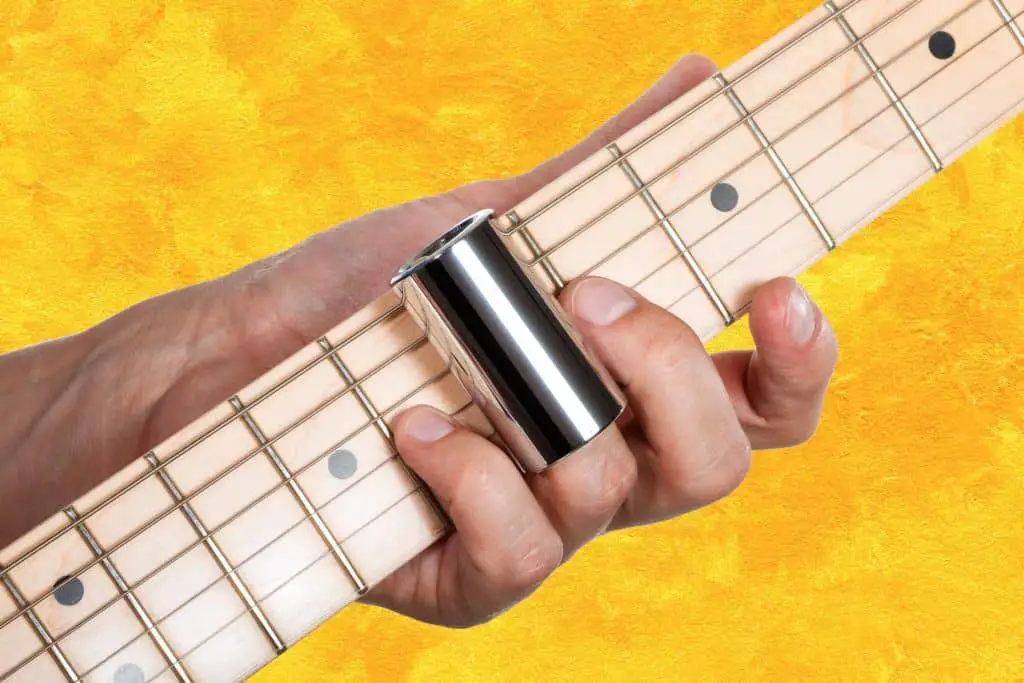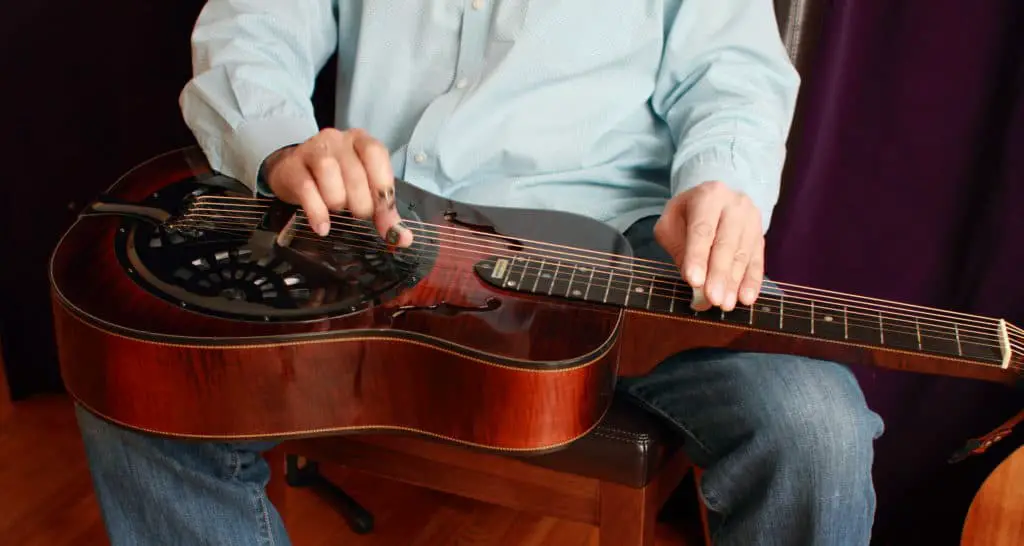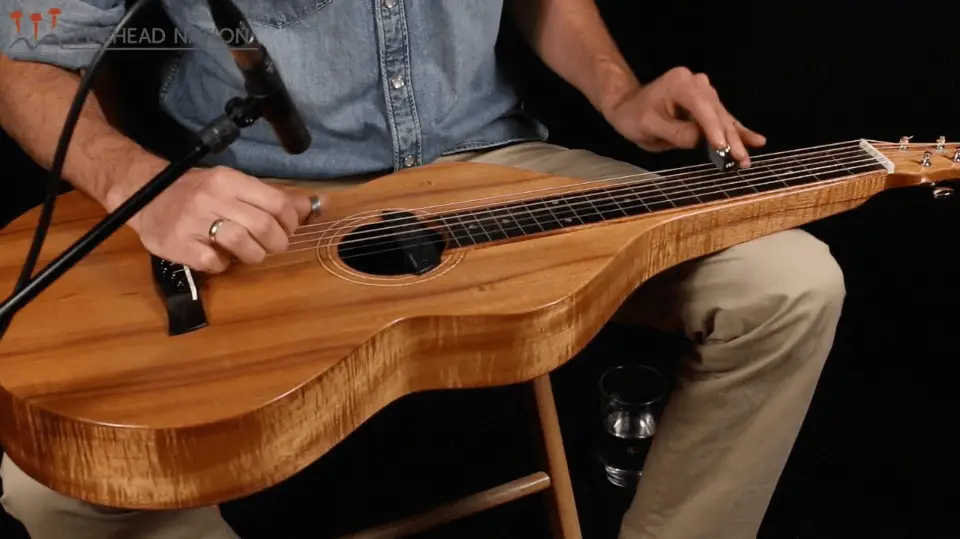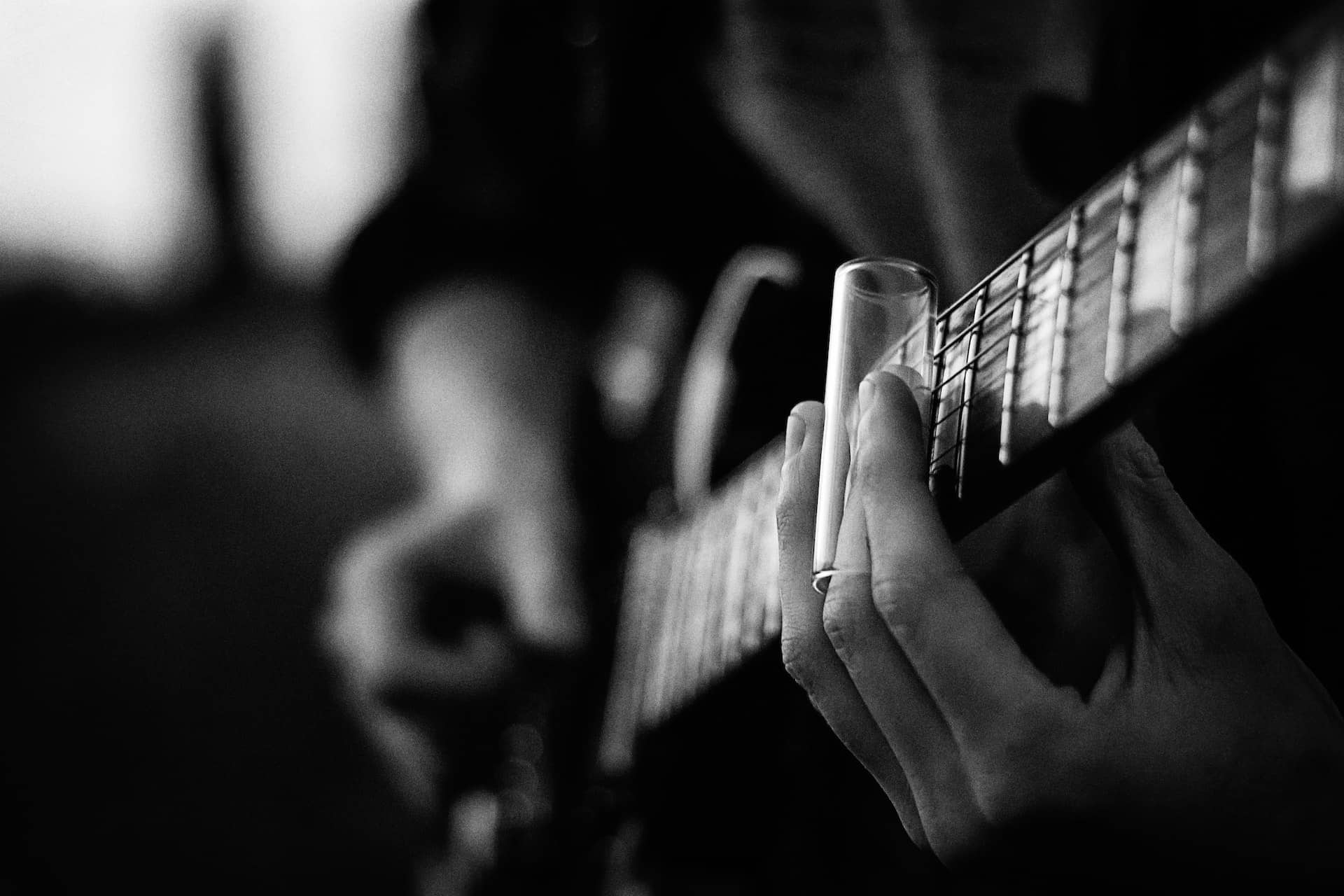The history of slide guitar began when the Hawaiian guitarist Joseph Kekuku accidentally discovered the slide guitar technique in 1889. It all started when Joseph was walking along a railroad track and found a metal bolt in the ground. As he picked up the bolt, he struck the strings of the guitar he was carrying and produced a metallic sound that he liked very much. From this moment, Joseph based his playing style on this sound. When he toured Europe in 1919 with the show “Bird Of Paradise” he launched the sound of the Hawaiian slide guitar into the world. Here is a short guide for beginners on how to play slide guitar.
Choosing a guitar to play slide guitar
The first rule of choosing a guitar to play slide is that you need steel strings. You can’t play on nylon strings because you won’t generate any sound. The good thing about slide guitar technique is that you can play both acoustic and electric guitars. If you are going to play mostly with slide, you should prepare a guitar just for this technique. That means using heavier strings, not using “super slinky” strings.
If you use the guitar only to play with this technique, you will need to change the tuning of the strings and use open tuning. This means that all the strings are tuned so that, when played, their notes with the open strings belong to major chords. This does not necessarily mean that they are tuned note by note using a chord as some notes can be omitted.
If you want to switch between normal and slide technique, but you only have one guitar, you need to keep the standard tuning of your guitar. The “Dobro” resonance guitars are the best for slide performance on an acoustic guitar. This is because they give a strong and metallic tone due to the metal cones, they have incorporated. Another advantage of playing slide guitar is that you can do it with an old guitar with worn fretboards since you don’t need the frets to play slide.
Choosing a slide to play slide guitar
When the time comes to choose, it is good to keep in mind that slides are usually made of glass or metal. Glass and metal produce a different sound from each other. This is already a matter of taste so you should try different slides to choose which one suits you best. But there is a general rule that a heavier slide will always generate more sustain.
In the early days of the blues, musicians used a bone or a knife to play slide guitar. The easiest way is to go to the store and buy a slide, but this is not very cool. There are other ways to get a slide. You can look in your garage for a piece of tubing. Copper heating tubes are the great raw material for making a slide at home. You can also look for those little glass pill bottles in pharmacies. Or you can simply use the neck of a bottle.
You should know that learning to play slide guitar styles is not easy and usually has a steep learning curve. One of the biggest challenges when playing slide guitar is the silencing of the strings that must be done with the right hand. This technique is used to mute the strings that you do not want to sound with the palm or the fingers of the right hand.
Different styles: Bottleneck, Dobro and Weissenborn
It is very clear that the slide guitar style is an American tradition because when you are playing it on an acoustic instrument, it is difficult not to sound American. Within this traditional way of playing the guitar, there are three main styles called Bottleneck, Dobro, and Weissenborn.
Bottleneck

This term is still used to describe playing the guitar by sliding a regular cylindrical fitting over the six strings of the guitar, even though it is not really a real bottleneck. It is the most widespread and still prevalent method of playing the slide guitar.
When playing with this method, you must take into account the application. This means that you must be clear about what form you will be playing before starting, to define which instrument, method, and playing style you will use. To define the application of the Bottleneck slide, it is necessary to know if you will play alone or with another guitar. Because if you play solo, you need a standard tuning to play with or without a slide.
But if you play with another guitar without a slide, you can tune your strings openly to devote yourself entirely to the Bottleneck method. So, if you have two guitars playing simultaneously, it’s best to have one of these dedicated to the slide technique. Things will be easier this way.
This silencing technique is also known as “string blocking”. Mastering this technique is not easy and may take some time to master. Also, if you are planning to move from one style to another, the transition from Bottleneck to Dobro can be challenging.
Dobro

As with many iconic brands, “Dobro” is actually the name of a resonator guitar brand owned by Gibson. Its popularity has led to it becoming the generic term for the product itself. But regardless of the manufacturer, the word “Dobro” comes from the words “Dopyera” and “Brothers”. The Dopyera brothers were Slovak instrument makers who invented the resonator for guitars.
These brothers started producing their guitar resonators in 1928. This invention made it possible to increase the volume of acoustic guitars in the period before the electric amplification of guitars. The body has an aluminum cone that acts as the speaker. This way, the body of the guitar acts as a cabinet for a speaker.
The dobro style is associated with country, western, or bluegrass music. Guitars for playing this style have strings that are separated from the fretboard. A heavy steel slide known as a bar is usually used. These instruments are the best method of playing with a slide since there is no danger of hitting the slide on the frets.
The downside of this type of guitar is that it can only be played with the slide method. It is not possible to play notes on the frets as on a standard acoustic guitar. With this method, your right-hand moves in the same way, but not the left. You will need to practice silencing your right hand to develop a clean technique.
Weissenborn

Hermann Weissenborn was already selling his koa wood guitars before the Dopyera brothers started producing their resonators back in 1928. Weissenborn’s koa wood guitars proved to be popular. This was due to the boom in Hawaiian music started by Joseph Kekuku. Hermann Weissenborn was born in Germany in 1863 and moved to America in 1902. People still use his last name to describe the Weissenborn style guitars made by different manufacturers.
Weissenborn guitars have a hollow neck. This way, they have a larger sound chamber than conventional acoustic guitars. This special feature helps them to produce an unusual and unmatchable tone. The playing method of a Weissenborn guitar is very similar to that of Dobro guitars. Although with Weissenborn guitars, many musicians use their bare fingers to play, instead of using a slide.
Which finger to use to play slide guitar
To play slide guitar, you can choose between the middle, ring, and little fingers. The index finger is not recommended because you need at least one finger to mute the strings on the other side. All fingers have their advantages and disadvantages. For example, the middle finger can help you to generate a big slide. However, you will have to lift your ring and little fingers, and you won’t be able to play in the traditional way.
The ring finger is big enough to get a good sound, and you have the index and middle fingers left to mute the strings. Even so, playing the normal way is difficult. The little finger is the best method of choice for combining sliding and normal playing. This way, you have three fingers to mute or play without slide. But little finger slides are smaller and may not cover all the strings.
Slide guitar tuning
When it comes to slide guitar tuning, the truth is that most performers use open tuning. This is very common, especially in acoustic guitars, when used as backup guitars. This means that all the strings are tuned so that the notes of the open strings belong to major chords.
This does not necessarily mean that they are tuned note by note using a chord since some notes can be omitted. Open tuning has the advantage that basic chords can be played using the slide. Finally, I want to tell you that play a slide guitar in standard tuning is better for playing when there is no other guitar on stage.



